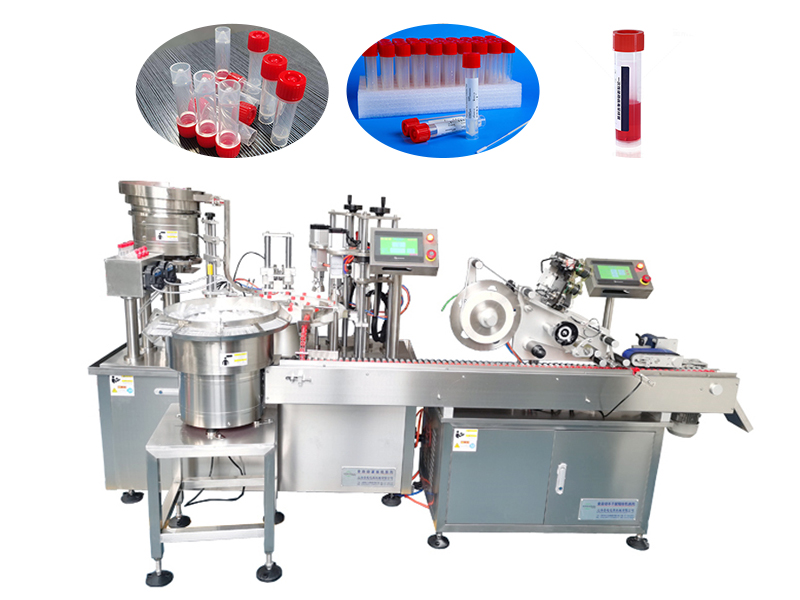Release Date:2024-08-06 11:47:53 Popularity:
In modern manufacturing, the application of automation equipment has become a key means to improve production efficiency, ensure product quality and reduce production costs. In order to achieve these goals, automation equipment assembly standards are particularly important. This article will discuss in detail the importance, basic principles, key components and future development trends of automation equipment assembly standards.

1. The importance of automation equipment assembly standards
Automation equipment assembly standards are the basis for ensuring equipment functional reliability, production efficiency and product quality. Standardized assembly helps:
1. Improve production efficiency: Through standardized assembly processes and operating specifications, reduce errors and rework in the assembly process, and improve overall production efficiency.
2. Ensure product quality: Unified assembly standards can ensure that each component and overall performance of the equipment meet the design requirements, and ensure the consistency and reliability of product quality.
3. Reduce production costs: Standardized assembly reduces losses and rework costs caused by incorrect operations, while increasing the service life of the equipment and reducing maintenance costs.
4. Promote employee training: Clear assembly standards provide clear guidance for the training of new employees, shorten the training cycle, and improve employees' operating skills and efficiency.
2. Basic principles of automation equipment assembly standards
Automation equipment assembly standards should follow the following basic principles:
1. Safety: Assembly standards should give priority to the safety of operators, ensure that each step in the assembly process complies with safety regulations, and avoid potential safety hazards.
2. Operability: The standard should have good operability, make the assembly process simple and easy, and reduce the complexity and difficulty of operation.
3. Traceability: The standard should include detailed records and inspection processes to ensure that each assembly step is traceable so that problems can be quickly located and resolved when they occur.
4. Consistency: The standard should ensure the consistency of the assembly process to avoid product quality fluctuations caused by operational differences.

3. Key components of automation equipment assembly standards
1. Assembly process: A clear assembly process is the core content of the standard. The process should describe each assembly step, the required tools and equipment, the operation method and precautions in detail.
2. Quality control: The standard should include quality control points, specify the various types of inspections and tests that need to be performed during the assembly process, and ensure that each component and the overall equipment meets the design requirements.
3. Personnel training: The standard should include training plans and assessment standards for assembly operators to ensure that operators have the necessary skills and knowledge.
4. Safety regulations: The standard should list in detail the safety regulations that need to be followed during the assembly process to ensure that operators work in a safe environment.
5. Records and feedback: The standard should specify the record requirements during the assembly process, including assembly time, operators, materials and tools used, etc., so as to facilitate subsequent analysis and improvement.
4. Application areas of automation equipment assembly standards
1. Manufacturing: In the automotive, electronics, machinery and other manufacturing industries, automation equipment assembly standards ensure the efficient operation of equipment and the stability of product quality.
2. Pharmaceutical industry: The assembly standards of pharmaceutical equipment strictly require the hygiene and precision of equipment to ensure the safety and quality of drug production.
3. Food industry: The assembly standards of food processing equipment also focus on hygiene and safety to ensure pollution-free and efficient food production.
4. Logistics industry: The assembly standards of logistics automation equipment improve the operating efficiency of equipment and ensure the speed and accuracy of the logistics process.

5. Development trend of automation equipment assembly standards
1. Intelligence: With the development of intelligent manufacturing, automation equipment assembly standards will incorporate more intelligent elements. Through data collection and analysis, automatic monitoring and optimization of the assembly process can be achieved to improve assembly efficiency and quality.
2. Modularization: Assembly standards will pay more attention to modular design, facilitate equipment upgrades and maintenance, and reduce the complexity of the assembly process.
3. Environmental protection: Standards will gradually consider environmental protection factors, require reducing resource consumption and pollution during the assembly process, and promote the development of green manufacturing.
4. Globalization: With the global development of manufacturing, assembly standards will tend to be internationalized, promote cross-border production and supply chain collaboration, and improve the overall level of global manufacturing.
To sum up, automation equipment assembly standards play an important role in modern manufacturing. By formulating and implementing efficient and reliable assembly standards, enterprises can not only improve production efficiency and ensure product quality, but also reduce production costs and enhance market competitiveness. In the future, with the development of intelligence, modularization, environmental protection and globalization, automation equipment assembly standards will continue to be optimized and upgraded, providing a solid guarantee for the sustainable development of the manufacturing industry.